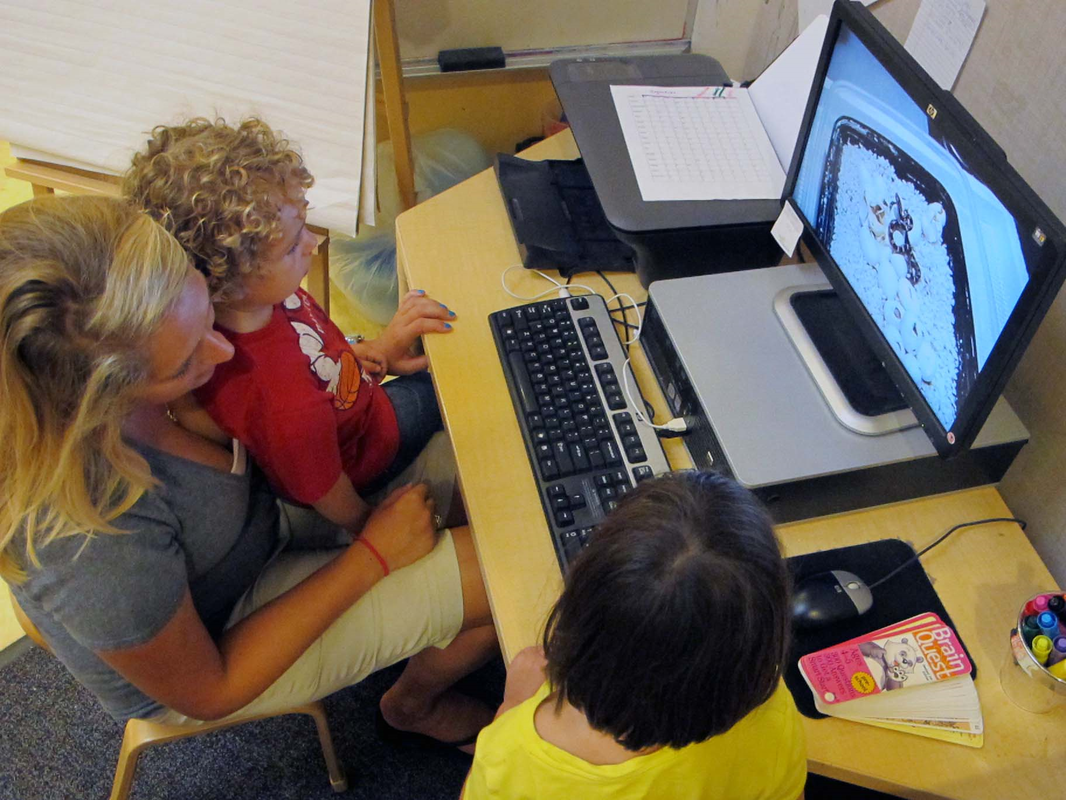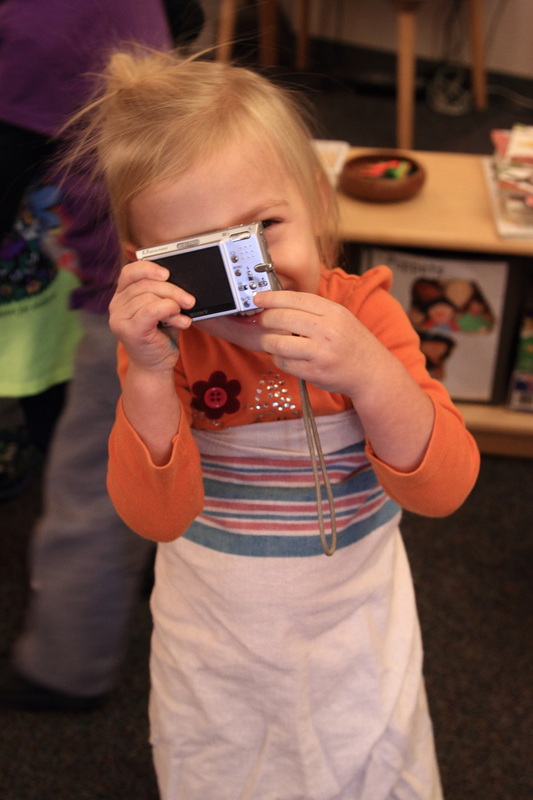ACCESS AND TECHNOLOGY

Technology is used to add investigations or to add to expertise of a subject matter or to simply record the results of an experiment. Children are not encouraged to use the internet or technology to simply find the answer, but rather to enhance and gather more information to continue their investigation work.
THE USE OF TECHNOLOGY

For many early childhood traditionalists, technology is seen
as a vehicle for inappropriate practice through the use of computer based
interactive workbooks. At the Bombeck
Center we view technology as an important tool for research, documentation and
parent communication. While the use of
pre-packaged computer software for young children is deemphasized, ACCESS
teachers in infant, toddler and preschool classrooms rely heavily on the
internet to search for information using their tablets, iPads, smartphones and
computers. They are careful not to allow
too much information to derail an investigation. For example, if a group of children are
investigating how earthworms can live in a garden without eating the fruits or vegetables,
the teacher will encourage children to come up with hypotheses, conduct
experiments to tests these hypotheses, and then report the results. They will not use the internet to come up
with the answer to their overall research question. They may however, use technology to find out
enough about earthworms to plan an experience or add to their investigation. Questions like “where do you get earthworms?”,
to what do they need to stay alive?” and “do they have a tail?” might be searched
in the process of setting up an experiment.
Children will also use technology to record the result of the experiment. They may take a digital picture each day to see if the earthworms have eaten the apple that was placed in the habitat. They might take pictures of tadpoles as they progress through their life cycle. Capturing a picture of a block structure or a video of a play that the class acted out allows children to document projects and products that are important to them.
Children will also use technology to record the result of the experiment. They may take a digital picture each day to see if the earthworms have eaten the apple that was placed in the habitat. They might take pictures of tadpoles as they progress through their life cycle. Capturing a picture of a block structure or a video of a play that the class acted out allows children to document projects and products that are important to them.
|
|
|
|
|
|
ENVIRONMENTS
ACCESS views the classroom environment as vital in creating
an inspiring child-centered curriculum.
An organized and well-staged environment will support learning in all
domains of development; will inspire wonder, creativity and innovation; and
will help children organize their neuro-network to make sense of their
world. With ACCESS, the physical environment
must be intentionally designed to support the strengths, needs and interests
of the children in the room both individually and collectively. The environment is not static and evolves as
the children grow and develop and as their interests change.
